By Asha Mane, Sydney Everhart and Tamra Jackson Ziems
In 2019, QoI (strobilurin, FRAC group 11) fungicide resistance was detected in soybean frogeye leaf spot samples from 10 Nebraska counties (Fig. 1).
Yield loss
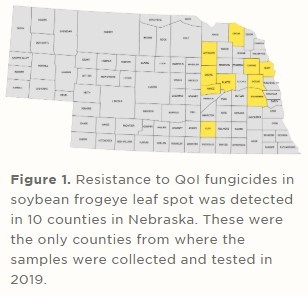
The presence of frogeye leaf spot (FLS) lesions reduces the function of the leaves; in severe cases, causing premature loss of leaves. Reduced function and/or premature defoliation results in reduced seed weight [1]. The estimated yield loss across the United States is up to 35%, while in Nebraska, the yield loss in some highly susceptible varieties is up to 20% [2,3].

Figure 2. Frogeye leaf spot on soybean leaf
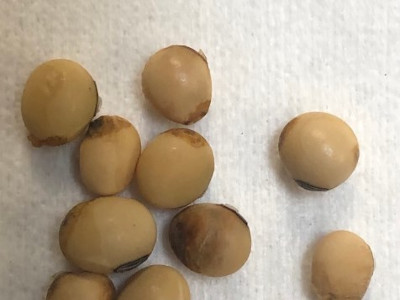
Figure 3. Frogeye leaf spot on soybean seeds
Leaf spot diseases have been identified in a few parts of Nebraska already in 2020, although FLS has not been confirmed in soybean yet. FLS is a foliar disease caused by a fungal pathogen, Cercospora sojina. FLS was first identified in the south-eastern United States in 1924. The disease has now spread past the northern border of Nebraska and was common across the eastern third of the state in 2017 [4,5]. The disease has occurred sporadically since then. The results from field trials suggest an integrated disease management approach including tillage (when practical), crop rotation, resistant varieties, seed treatment, and timely application of mixed-mode of action fungicides [6] provides the best control.
Symptoms
FLS is a foliar disease of soybean, although seeds, pods, and stems can also be infected (fig 2,3) [7]. The spots are circular in shape with a size ranging from 1 to 5 mm. Initially, they appear as dark water-soaked spots, but later appear brown in color with reddish-purple margins. Younger leaves in the upper canopy are more susceptible than older fully expanded leaves [6]. Infection can occur at any time during soybean growth and development, but is more common after flowering [8].
Symptoms may look similar to those of Phyllosticta Leaf Spot, caused by the fungus Pleosphaerulina sojicola (or Phyllosticta sojicola). Lesions of Phyllosticta Leaf Spot appear tan or gray with a dark margin and can vary in shape as circular or oval (Figure 4). Mature lesions may have black specks (fungal reproductive structures) visible in the center (Figure 5), in contrast to lesions of Frogeye Leaf Spot [16]. For more information, see the related article from the Crop Protection Network on Phyllosticta Leaf Spot.

Figure 4. Phyllosticta leaf spot lesions can look similar to those of Frogeye Leaf Spot
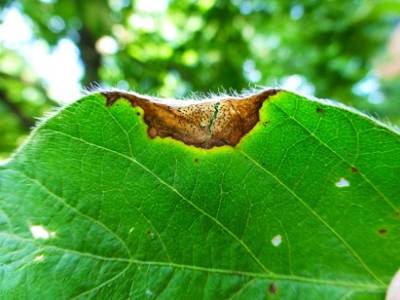
Figure 5. Mature Phyllosticta leaf spot lesions may contain dark “specks” that are fungal reproductive structures and can be used to differentiate their lesions from those of Frogeye Leaf Spot
Disease Cycle
FLS is a polycyclic disease (Fig. 6) that continues to repeat and spread as long as conditions are favorable. FLS pathogen Cercospora sojina survives on infected seeds and in infested soybean residue for up to two years. Infected leaves/stems/pods produce conidiophores that produce conidia (spores) which are the sources of inoculum. Splashing rain, irrigation water, and wind disperse conidia. The severity of the disease is determined by the amount of primary inoculum (in the field, on seed, etc) and the number of secondary disease cycles that occur. Environmental conditions that favor the disease include warm temperature (77-86 °F) and wet weather (frequent rainfall or irrigation) with a relative humidity of >90%. The lesions are visible in 7-14 days after infection. If warm, humid conditions persist, the pathogen produces spores intensively, increasing the disease severity. If plants in the field are infected, the infested crop residue left after harvest acts as a source of primary inoculum and infects the next soybean crop [2, 8, 9].
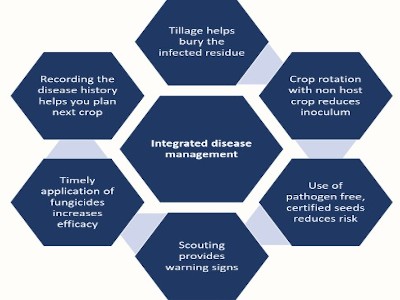
Figure 6. Integrated disease management plan for frogeye leaf spot.
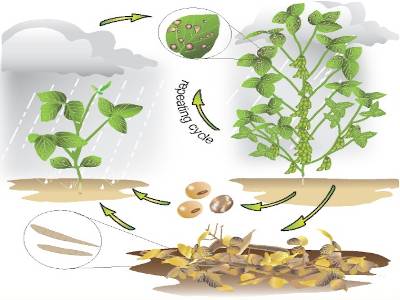
Figure 7. Frogeye leaf spot disease cycle.
An Integrated Disease Management Plan
Pre-planting or Field Related Decisions
FLS is caused by a residue- and seed-borne fungus. Continuous soybean planting and minimum tillage practices increase the risk of disease development. Crop rotation with non-host crops, such as corn, sorghum, and small grains, can interrupt the disease cycle of the pathogen, thereby reducing the inoculum level and disease incidence when growing future soybean crops. Crop rotation should be practiced for two or more years away from soybean, depending upon the disease history in the field [2]. Tillage practices bury the infested crop residue, promoting degradation and reducing the amount of primary inoculum and future disease severity, but may not be practical. [9].
Choice of Cultivars
Selecting high-quality and certified seed reduces the risk of introducing the fungus into fields via infected seeds. Planting disease resistant varieties is a very efficient and economical way of managing foliar diseases. Soybean varieties can vary in their level of resistance. Growers should consult with seed company representatives and review disease ratings to identify resistant varieties [9]. Resistance gene Rcs3 has been reported to be resistant against all known races of the FLS pathogen in the United states [10].
Scouting
In addition to weeds, and insects, growers should scout soybean fields for leaf spots (refer to Fig. 2). Dark irregular spots on stunted seedlings may be an early warning sign of FLS. If growers are unsure about the identity of a problem, they can collect samples and send them to the UNL Plant & Pest Diagnostic Clinic or contact their local Nebraska Extension county educator with questions. Video 1 can help you know “what to look for”.
Application of Foliar Fungicides
Fungicide applications can be very effective controlling FLS. Products applied to soybean in reproductive stages R3 to R5 are most effective. R3 is the beginning of pod development whereas R5 is the beginning of seed development [2]. If FLS continues to spread after timely fungicide application, it may indicate fungicide resistance [11]. Group 11 Quinone Outside Inhibitor (QoI) fungicides (formerly referred to as “strobilurin”) were historically the most effective and widely used for management of FLS. Since 2010, resistance to this class of fungicides has been documented in the FLS pathogen in numerous other states. In 2019, soybean leaf samples with FLS were collected from fields in 10 Nebraska counties. QoI fungicide resistance was confirmed in samples from all 10 of the Nebraska counties sampled in this small survey (Fig. 1) [14]. This is the first confirmation of fungicide resistance for this pathogen in Nebraska. Similarly, nearly all of the fungal isolates collected and tested from Iowa soybean fields in 51 counties were also resistant to QoI fungicides (12) and similar scenarios have been reported for several other states. It is unknown how widespread fungicide resistance is in the frogeye leaf spot pathogen in Nebraska yet. In 2020, soybean fields with a history of FLS should be monitored carefully for disease development. The efficacy of fungicides for disease control is determined by the product choice, application method, and timing of the application [13]. Growers should consider alternative fungicides for FLS management and avoid spraying products that only contain Group 11 QoI active ingredients. Products with two or more effective active ingredients with mixed modes of action will be more likely to provide effective control of the disease. Relative efficacy of fungicides on FLS can be found in the Crop Protection Network’s publication on Fungicide Efficacy for Control of Soybean Foliar Diseases.
Source : unl.edu